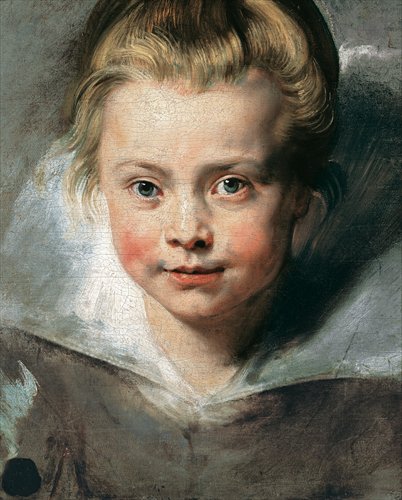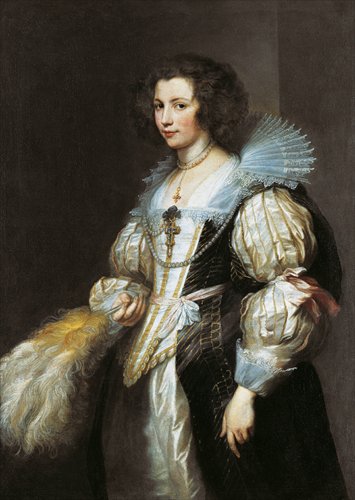Flemish art showcase
"When I open the windows in the morning in Liechtenstein, and I look out of the windows, I see mountains of two neighboring countries, Switzerland and Austria, so for Liechtenstein it's very natural to look across borders," Prince Maximilian of Liechtenstein said Tuesday at the China Art Museum.
The Princely Collections of Liechtenstein, one of the most important private holdings of art in the world, with collections of major works of European art spanning five centuries from the Renaissance to the Biedermeier era, brought exactly 100 works of Flemish art across borders to Shanghai. The works were previously exhibited in Beijing from November until February.
Entitled Rubens, Van Dyck and the Flemish School of Painting - Masterpieces from the Collections of the Prince of Liechtenstein, the exhibition aims to present a panorama of the art school from its very beginning to its peak in the 17th century and beyond into the 18th century, highlighting some 20 works by Peter Paul Rubens, whose name has become synonymous with Flemish Baroque painting.
This touring exhibition marks the first time that Chinese audiences are able to see Flemish art on such a large scale in domestic museums, and it is also the first time for the Princely Collections of Liechtenstein to curate an overseas exhibition on Flemish painting.

Portrait of Clara Serena Rubens

Portrait of Maria de Tassis is showcased at the ongoing exhibition at China Art Museum.Photos: Courtesy of the museum
Careful and detailed depiction
The origins of Flemish painting lie in the early Netherlandish art of Flanders (approximate to the Dutch-speaking northern portion of Belgium today) in the 15th century. Artists of this period were keen on detailed depictions that emphasized a realistic rendition of objects in their paintings, which opened possibilities for specialized pictorial genres such as landscape painting, still life and genre painting.
Flemish painters used oil, a significant change from tempera, which until then was the most widely used painting medium, allowing them to achieve much more naturalistic depictions of light. Some Flemish artists learned techniques from such Italian painters such as Caravaggio, da Vinci and Michelangelo.
Rubens, a humanist artist whose works are known for their extravagant Baroque style with emphasized movement and color, pushed Flemish art to its peak in the 17th century with a large body of works that ranged from portraits to landscapes, and from altarpieces to paintings of allegorical and mythological subjects. His students at his Antwerp studio, such as Anthony van Dyck and Jacob Jordaens, also became important Flemish painters.
Dr. Johann Kräftner, director of the Princely Collections of Liechtenstein, told the Global Times that Flemish art made a great contribution to the development of art history as it gave artists the freedom to paint quickly. Rubens influenced a number of painters in the first half of the 19th century, such as the French romantic artist Eugène Delacroix.
Lifelong creations of Rubens
The exhibition in China differs from previous tours in Japan and Singapore, focusing on an overall showcase of Flemish art, which is divided into 13 sections including four sections dedicated to Rubens' major works, from his early sketches to large-format paintings and tapestries in his last years.
The Prince revealed that his favorite work at the exhibition is Portrait of Clara Serena Rubens, which depicts the artist's 5-year-old daughter.
Also on display is Portrait of Maria de Tassis - one of van Dyck's most famous works, depicting an elegant daughter from an old Italian family - together with eight other portraits by the artist in a section dedicated to van Dyck.
Visitors can also have a look at major Flemish landscape paintings, still-life paintings as well as small-format cabinet paintings at the exhibition.
Dr. Kräftner also offered a few suggestions for visitors. "When you start with early paintings, you have really to go close to study everything. For instance, in some small paintings, there is a large black area which you may think is a black landscape, but when you look closely and carefully, you will find hundreds of animals in the paintings."
"If this exhibition turns out to be successful and brings a lot of interest, we'll have the opportunity to organize other follow-up exhibitions in years to come around different themes," said the Prince, noting that the exhibited artworks are only a small fraction of the thousands in their collection.
Date: Until June 2, 9 am to 5 pm, admission stops at 4 pm (closed on Mondays)
Venue: 17th exhibition hall, China Art Museum
中华艺术宫第17号展厅
Address: 205 Shangnan Road
上南路205号
Tickets: 20 yuan
Call 400-921-9021 for detailed information